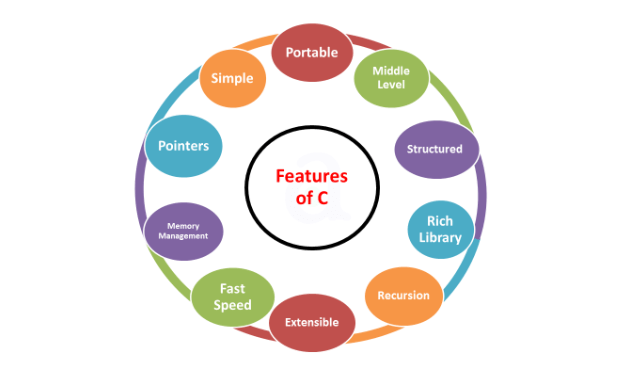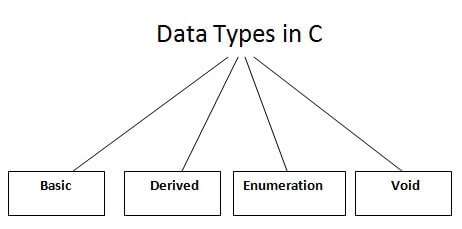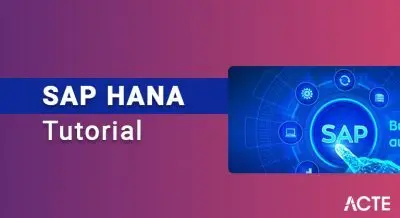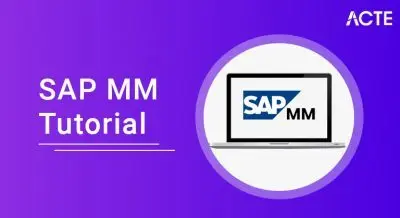
- Requirements for the C Language
- Concept of c language
- C’s primary use cases and requirements
- Features you learn in C Tutorial
- Characteristics of the C Language
- Types of c language
- Challenges of c Languages
- C vs C++
- Trends in the C Language
- Conclusion
This tutorial will teach you all about C language, starting with its introduction, installation, first program, data types in C, variable and constant in C, and more. Operators, if statements, keywords and comments, C programmers, storage classes, c functions, strings, unions, loops, and dynamic memory allocation are all included in this language. This C lesson is your first step in learning and mastering this top programming language. C’s fundamental features, which have helped it become a popular programming language, are as follows:
- Regarded as the originator of all contemporary programming languages.
- Used to program low-level system components, such as drivers and kernels.
- It is a language that falls between the lower and upper levels, making it a middle-level language.
Requirements for the C Language
Procedural programming, such as C language , is also known for its portability and efficiency, making it ideal for cross-platform development. Code written in C can be compiled and run on various hardware and operating systems with minimal changes, allowing developers to write applications easily adapted to different environments. This adaptability, combined with the language’s performance advantages, enables the creation of high-performance applications ranging from operating systems to embedded systems, ensuring that developers can leverage system capabilities effectively. C’s rich set of standard libraries provides developers with a robust toolkit for building applications, enhancing productivity and reducing development time. The language’s low-level capabilities allow for direct manipulation of hardware resources, making it particularly suited for systems programming.
Want to Earn Your C Program Professional Certification? Check Out the C Programming Certification Course Available at ACTE Now!
Concept of c language
The C programming language is one of the most basic, high-level languages known and acclaimed for their efficiency and versatility. It is known to be structured in nature, with all programs made up of functions, mostly the main() function. Data in a program can be produced by various types, such as int, float, double, and char, facilitating efficient handling. Variables must be declared before use, and constants can have fixed values. C offers arithmetic, relational, and logical operators for data operations, similar to how Synchronization in C# ensures safe access to shared resources in concurrent programming. Control structures such as if, for, and while expressions control the program flow, while functions are used for code reusability and organizational ability. Another distinctive feature is the presence of pointers, which enable direct manipulation of memory, an essential part of dynamic memory management. Arrays and strings are used to hold collections of data as well as text. Structures and unions help group dissimilar data types to provide a user-defined data type. C further aids robust file I/O operation for data persistence and dynamic memory allocation functions like malloc() and free() for memory use. Preprocessor directives, such as #include, are further used to include libraries and definitions. Overall, the concepts of C provide a basis for understanding computer programming and system-level operations.
C’s primary use cases and requirements
-
Programming for Systems
- Low-level operations: C is the preferred language for developing operating systems because it enables direct manipulation of hardware resources.
- Writing Drivers for Embedded Systems: C is often utilized in the development of firmware, embedded systems, and device drivers due to its performance efficiency and low-level memory access. Applications that are essential to performance
- Speed: C’s speed is heavily dependent on real-time systems, high-performance computation, game engines, and other applications requiring high performance.
- Effective memory management: C provides fine-grained control over memory through pointers and manual memory allocation, essential in contexts with limited resources. Portable Code
- Cross-platform compatibility: C code is suitable for creating cross-platform software since it can be built on various platforms with little modification.
- Small code size: Its memory footprint is efficient, which makes it perfect for embedded systems with constrained resources. Antiquated Systems
- Maintainability: C remains widely used in older programs and systems, making it essential for understanding and maintaining legacy codebases in finance, telecommunications, and the automotive industry. This need parallels how a Stack Collection in C# is crucial for efficiently managing data in various applications.
To Obtain Your C Programming Certification, Learn from Leading C Programming Experts and Advance Your Career with ACTE’s C Programming Certification Course.
Features You Learn in C Tutorial
- Efficiency and Performance: C is a hardware-close language and is quite efficient. It performs close-to-hardware capabilities and is suitable for system-level programming. Programs written in C could run very fast; this is important for OS, embedded systems, and high-performance applications.
- Portability: Another strength is portability —C programs can easily be compiled on many other systems with minimal changes. This allows developers to write applications that run in a variety of operating systems and hardware architectures.
- Low-Level Access: Pointers are an important feature of the C tutorial. They allow low-level access to memory. With this facility, developers can use data a byte at a time, which is quite helpful in system programming when there must be direct control over memory.

- Modular Programming: C enables modular programming through functions and, therefore, permits code to be reused and managed in a more structured manner. The programmers split the program into small and manageable functions, which improves readability and maintainability.
- Rich Set of Operators: C offers an impressive set of operators comprising arithmetic, logical, bitwise, and relational operations. This allows for easy performance of complex computational and data manipulation operations.
- Standard Libraries: C also includes a rich standard library of many built-ins for I/O operations, string manipulation, mathematical computations, and much more. It makes the development process easier by providing some pre-written, tested code.
Characteristics of the C Language
- Efficiency and Simplicity: Its systematic approach and basic grammar make learning the C language easier.
- Quick Speed: C is a static programming language, so it is faster than dynamic languages like Python and Javascript. This makes C one of the quickest programming languages. C’s compiler-based architecture can be attributed to speedier code compilation and execution.
- Portable: C allows you to write code only once and execute it on any computer, anywhere. This demonstrates that it is a machine-independent language.
- Memory Management: C uses pointers and procedures like free(), realloc(), and others to offer lower-level memory management. Pointers are included with C. We can directly access or work with memory through pointers. A pointer can be initialized as an array, variables, etc.
- Structured Language: C’s structural programming features let you write code in separate sections using C functions that can be saved as libraries for future use.
Ready to Master Full Stack Developer? Explore the Full Stack Developer Master Program Available at ACTE Today!
Types of c language
- Basic Data Types: Includes int, float, double, and char.
- Derived Data Types: Comprises arrays, pointers, structures, unions, and enumerations.
- Type Qualifiers: Utilizes const (for immutable values) and volatile (for variables that may change unexpectedly).

- Function Return Types: Specifies the type of value that functions can return.
- User-Defined Types: Created using typedef and struct to define custom data structures.
Trends in the C program
- Development of Embedded Systems: C is still a very current language widely used in embedded systems because of its efficiency and direct manipulation capability with hardware. The introduction of IoT (Internet of Things) has thrown it into a pool of much higher demand for developing firmware in smart devices.
- Modern Standards of C: Advancements in modern C standards include multithreading support, higher-level type generic programming, and safer functions in C11 and C18. Many developers are adopting these standards to boost performance and security, similar to how Multithreading in C# enhances application responsiveness and efficiency.
- C and C++: C is increasingly integrated with C++. Again, this primarily occurs with systems programs and game development, where developers work on applications with very good performance-critical code written in C while leveraging the high-level features of C++, like object orientation.
- Static Analysis Tools:Static analysis tools have also been in high demand due to the increasing emphasis on quality and security. These tools are primarily used to search for potential vulnerabilities or code smells before deployment.
- Real-Time Applications:The C language is preferred in real-time applications, such as creating automotive software and robotics. Proper control over system resources implies precise performance and timing capabilities of the language.
- Open Source Contributions: Most C projects are open source, which encourages community collaboration. This trend promotes shared knowledge and best practices, improving general quality in C code.
- Learning Resources and Education:Because C remains the basis of computer science education, there is a resurgence in learning tools aimed at teaching C programming, emphasising its relevance in understanding lower-level programming concepts.
C vs C++
| Aspect | C | C++ |
|---|---|---|
| Paradigm of Programming | Language for procedural programming. | Supports object-oriented programming (OOP) as well as procedural programming. |
| Object-Based Guidance | No backing for ideas that are object-oriented. | Supports encapsulation, polymorphism, inheritance, and classes—all of which are OOP concepts |
| Information Security | Because there is no access restriction, data is less safe. | Private and protected access specifiers are useful tools for data security. |
| Overloading a Function | Does not allow for excessive function usage. | Allows for function overloading, which is the use of numerous functions with distinct names and parameters. | Overloading the Operator | Does not allow for excessive operator loading. | Allows for overloading of operators. |
| Namespace Assistance | Is not name space compatible. | Prevents name conflicts by supporting namespaces. |
Geared Up for an C Programming Job Interview? Browse Our Comprehensive Set of C Programming Interview Questions to Help You Prepare!
Challenges of c Languages
- Write a program that outputs the Fibonacci series up to several user-defined terms. For example, if the user enters 10 in, the output should print 0, 1, 1, 2, 3, 5, 8, 13, 21, 34
- Write a program determining whether a given string or number is a palindrome. A palindrome reads the same in both directions; for instance, “racecar”.
- Write a method to compute the factorial of a nonnegative integer using both iterative and recursive methods. The factorial of n, where n is a nonnegative integer, is the product of all positive integers less than or equal to n.
- Develop a program to find and print all prime numbers between 1 and a user-defined limit. A prime number is greater than 1 and divisible only by 1 and itself.
- Reverse a String Develop a function that reverses a given string without using any string reverse functions. For example, inputting “Hello” should return “college”.
- Implementation of Bubble SortImplement, the bubble sort algorithm sorts an array of integers. Prompt the user to enter the size and elements of the array as input, then print out the sorted array.
- Simple Calculator Implement a simple calculator that performs basic operations, such as addition, subtraction, multiplication, and division, depending on the value entered by the user. Use functions to modularize the code for all operations.
- Count Vowels and Consonants: Write a program that counts how many vowels and consonants are in a string. Consider both lowercase and uppercase letters.
Conclusion
In conclusion, mastering the C language through our comprehensive C tutorial equips you with the foundational skills necessary for programming and software development. C is a powerful, versatile language that forms the backbone of many modern programming languages and systems. By grasping core concepts like data types, control structures, functions, and memory management, you’re well-equipped to tackle advanced software development topics. Proficiency in C opens many career opportunities, as it is essential for system-level programming, embedded systems, and performance-critical applications, similar to how Encapsulation in Java manages complexity by bundling data and methods. Companies value developers who can write efficient, reliable code that interacts closely with hardware. As you progress in your understanding of C, you’ll find that the skills you acquire are transferable to other languages and paradigms, enhancing your overall programming acumen. This foundational knowledge boosts your confidence and prepares you for future challenges in software engineering, making you a valuable asset to any development team.






